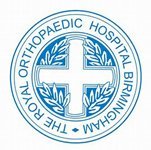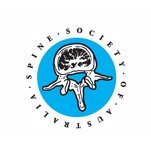Services
Dr Finch is an expert spine and orthopaedic surgeon. He renders the most comprehensive surgical care for all spine conditions. He also specializes in the diagnosis and treatment of cervical, thoracic and lumbar spine injuries.
Introduction to Spine
The spine, also called the back bone, plays a vital role in stability, smooth movement and protection of the delicate spinal cord. It is made up of bony segments called vertebrae with fibrous tissue called intervertebral discs between them. The vertebra and discs form the spinal column from the head to the pelvis, giving symmetry and support to the body.
Cervical Spine
The spine can be divided into 4 parts: cervical, thoracic, lumber and sacral region. The cervical spine comprises the first 7 vertebrae of the spinal column, which form the neck.
The cervical spine is highly mobile compared to other regions of the spine such as thoracic or lumbar spine. In contrast to other parts of the spine, the cervical spine has transverse foramina in each vertebra through which the vertebral arteries supply blood to the brain.
Thoracic Spine
Thoracic spine is the central part of the spine, also called as dorsal spine, which runs from the base of the neck to the bottom of your rib cage. The thoracic spine provides flexibility that holds the body upright and protects the organs of the chest.
Spine is made up of 24 spinal bones, called as vertebra, of which, the thoracic region of the spine is made up of 12 vertebrae (T1-T12). The vertebrae are aligned on top of one another to form the spinal cord which gives the posture to our body. The different parts of the thoracic spine include bone and joints, nerves, connective tissues, muscles, and spinal segment.
Lumbar Spine
The lowest part of the spine is called the lumbar spine. This area usually has five vertebrae. However, sometimes people are born with a sixth vertebra in the lumbar region. The base of your spine, called the sacrum, is a group of specialized vertebrae that connects the spine to the pelvis. When one of the bones forms as a lumbar vertebra rather than part of the sacrum, it is called a transitional, or sixth, vertebra. This occurrence is not dangerous and does not appear to have any serious side effects.
Common Problems of the Spine
Some of the common problems of the spine include:
- Pinched Nerves
- Herniated disc
- Spine arthritis
- Spinal stenosis
- Scoliosis
- Kyphosis
- Spinal Trauma
Symptoms of spine problems
If you experience any of the following symptoms you can contact Dr Finch’s office.
- Numbness
- Gait
- Weakness
- Pain in the neck, shoulder, back or lower back
- Deformities in your back or shoulder
- Spine stiffness
- Fatigue
Diagnosis
- History
- Family History
- Other Related problems
- Severity of pain
- Physical Examination
- Range of motion
- Weakness
- Motor skills
- Reflexes
- Diagnostic Tests
- X-ray
- MRI
- CT Scan
- Myelogram
- Bone Scan
- Adams Forward Bend Test
Treatment Options
- Conservative Treatments
- Medications
- Spine Injections
- Surgical Treatments
- Pre-op preparation
- Surgery
- Post-operative care
- Physical Therapy
If you wish to be advised on the most appropriate treatment, please call +61 7 5444 7579 to schedule an appointment or click to request an appointment online.













